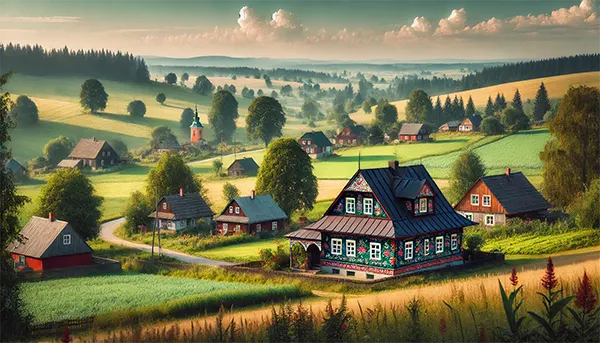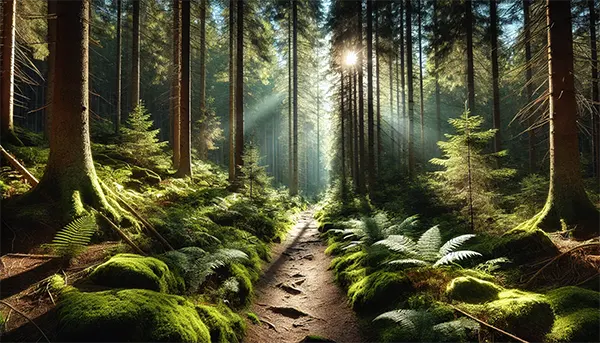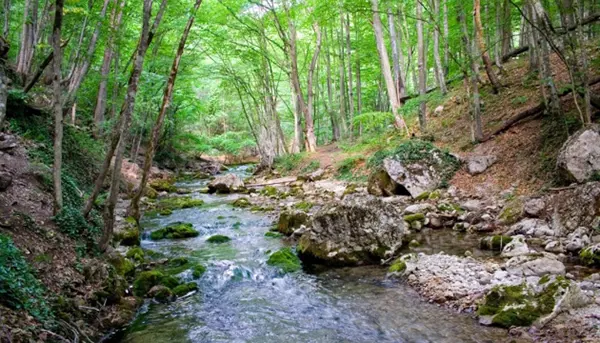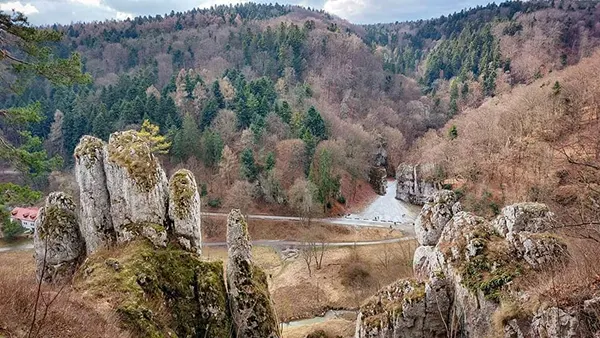
Unusual Tourist Routes in Poland: Exploring Hidden Gems Beyond Popular Destinations
Poland is a country rich in history, culture, and natural beauty, but it’s often the well-known tourist hotspots that dominate the travel guides. While cities like Warsaw, Kraków, and Gdańsk draw the majority of visitors, there are lesser-known corners of the country that offer unique experiences. For those seeking to escape the usual routes, Poland’s hidden gems present opportunities to explore its quieter, more traditional, and natural side.
Discovering Historic Villages with Rich Traditions
One of the best ways to experience Poland beyond the usual tourist spots is by visiting its historic villages. These places are steeped in culture and offer a glimpse into a simpler, yet deeply rooted way of life. Villages such as Zalipie, a village famous for its painted houses, or Sromowce Niżne in the Pieniny Mountains, boast rich traditions that have been preserved over centuries. Walking through these areas, you will be able to enjoy not only scenic landscapes but also learn about the customs that have shaped Polish rural life for generations.
Another lesser-known but fascinating village is Łysa Góra, located in the Holy Cross Mountains. This region is home to Poland’s oldest pine forests, and while it may not be on the typical tourist trail, its remote beauty and historical significance make it a must-visit for those who appreciate nature and heritage. The village also has a deep connection to ancient Polish traditions, offering visitors a chance to explore historical landmarks and enjoy authentic Polish cuisine in family-run inns.
These villages not only offer a break from the crowds but also provide an authentic Polish experience, far from the hustle and bustle of major cities. Whether you’re hiking through the forests or admiring the traditional wooden architecture, these rural areas offer much to discover for the curious traveller.
Why Historic Villages Are Essential to Polish Culture
The appeal of these villages lies not only in their aesthetic charm but also in the stories they tell. The wooden houses, local craftsmanship, and historical landmarks serve as living museums of Polish culture. For example, in Zalipie, the tradition of painting houses with bright flowers dates back to the early 20th century, making it one of the country’s most fascinating folklore sites. This village and others like it provide insight into how Polish people have lived for centuries and are crucial for preserving the country’s cultural identity.
Similarly, the wooden churches scattered throughout the villages offer a glimpse into the religious history of the region. Many of these churches, such as those in the Bieszczady Mountains, are UNESCO World Heritage Sites and showcase traditional wooden architecture that is increasingly rare in modern Poland.
By visiting these hidden gems, tourists can engage with the living traditions of Poland, gaining a deeper understanding of its past and present, and appreciate the preservation efforts that ensure these cultural sites remain intact for future generations.
Exploring Poland’s Natural Reserves and Remote Nature Trails
Poland is known for its vibrant cities and historical landmarks, but the country’s natural reserves are often overlooked. For those seeking adventure off the beaten path, Poland offers an array of stunning nature trails that lead through untouched landscapes, from the Białowieża Forest, one of Europe’s last primeval forests, to the wild expanses of the Bieszczady Mountains. These natural reserves offer the chance to explore Poland’s wilderness in its most pristine form.
For nature enthusiasts, the Bieszczady National Park offers a range of trails that wind through remote valleys, rugged hills, and untouched forests. This is a place where visitors can spot wildlife like bison, wild boars, and a variety of bird species, all while experiencing the peace and solitude of one of Poland’s least developed regions. The Bieszczady Mountains also offer some of the most breathtaking views in the country, especially when viewed from peaks like Tarnica, the highest mountain in the region.
Another unique destination for nature lovers is the Tatra National Park, which stretches along the Polish-Slovak border. While Zakopane is a popular gateway to the Tatras, the park itself offers numerous hiking trails that lead into more remote areas of the mountains. From crystal-clear lakes to dramatic cliffs, the Tatra Mountains are an ideal destination for those looking for a peaceful escape into nature.
Why Poland’s Natural Reserves are Worth Exploring
Poland’s natural reserves provide a sanctuary for both wildlife and people looking to connect with nature. These parks and reserves not only protect diverse ecosystems but also offer an array of outdoor activities for tourists. Hiking, birdwatching, and wildlife photography are just a few of the activities that can be enjoyed in these remote locations, making them perfect for those who seek an immersive natural experience.
The Białowieża Forest, for instance, is home to the European bison, a species that was brought back from the brink of extinction. A visit here not only allows you to witness these majestic creatures in their natural habitat but also offers insight into the conservation efforts that have been critical in saving the species.
These protected areas are essential for maintaining biodiversity in Poland and are a valuable resource for eco-tourism. By visiting these locations, tourists not only experience the raw beauty of Poland’s natural landscapes but also support conservation efforts that help preserve them for future generations.

Adventure Awaits in Poland’s Lesser-Known Castles and Fortresses
While Poland is home to many famous castles, such as the Wawel Castle in Kraków and Malbork Castle, there are numerous lesser-known fortresses scattered throughout the country. These hidden gems offer fascinating glimpses into Poland’s medieval past and are often much quieter and less crowded than the more famous sites.
One such castle is the Ksiaz Castle, located in the Lower Silesia region. It’s the third-largest castle in Poland and is surrounded by lush forests and gardens, making it a perfect spot for a day trip. The castle itself is rich in history, having been used by various noble families over the centuries, and is also a site of mystery, with several secret tunnels and rooms waiting to be explored.
Another hidden gem is the Ogrodzieniec Castle, situated in the Jura Krakowsko-Częstochowska region. This ruined medieval fortress, perched on a hill, offers stunning panoramic views of the surrounding landscape. It’s not as well-known as some of Poland’s other castles but provides an equally impressive experience for history buffs and nature lovers alike.
Why Castles and Fortresses Are Key to Poland’s Medieval Heritage
Poland’s castles are not only historical sites but also cultural symbols of the country’s past. Many of these fortresses were built during the medieval period to defend against invasions and to establish the power of local rulers. By visiting these lesser-known castles, tourists can get a sense of the country’s turbulent history and the resilience of the Polish people.
These castles also offer a look at the architectural styles of the medieval period, from Gothic to Renaissance. Many of the castles feature original stonework, defensive walls, and towers, making them fascinating to explore for those interested in history and architecture.
For those who enjoy a more peaceful experience, many of these castles are set in picturesque landscapes, allowing visitors to combine their love of history with the beauty of nature. Exploring these forgotten fortresses offers a deeper connection to Poland’s medieval heritage and allows for a more intimate experience than the larger, more crowded sites.
Popular articles
-
 Moszna Castle: A Fairytale Landmark of Lower Silesia
Moszna Castle: A Fairytale Landmark of Lower SilesiaMoszna Castle stands as one of the most recognisable historical …
-
 Roztocze — the Green Pearl of Eastern Poland
Roztocze — the Green Pearl of Eastern PolandRoztocze, a scenic region stretching across the Lublin Voivodeship in …
-
 Kraków Valleys — Picturesque Gorges, Rocks and Walking Trails near Kraków
Kraków Valleys — Picturesque Gorges, Rocks and Walking Trails near KrakówThe Kraków Valleys, known in Polish as Dolinki Krakowskie, are …
